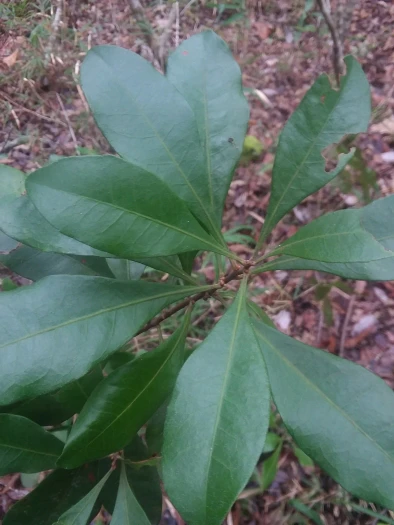Scentless Bayberry
(Morella inodora)
Scentless Bayberry (Morella inodora)
/
/

Will McFarland
CC BY 4.0
Image By:
Will McFarland
Recorded By:
Copyright:
CC BY 4.0
Copyright Notice:
Photo by: Will McFarland | License Type: CC BY 4.0 | License URL: http://creativecommons.org/licenses/by/4.0/ | Rights Holder: Will McFarland | Publisher: iNaturalist | Date Created: 2019-12-12T10:08:17-08:00 |

























Estimated Native Range
Climate Requirements for Denton, Texas
| This Plant | Your Site | Plant Suitability for Your Location | ||
|---|---|---|---|---|
| • Precipitation | 50" - 67" | 38" | Aquatic | Aquatic |
| • High Temp. | 89°F - 92°F | 96°F | Your summers may be too hot for this plant. | Too hot |
| • Low Temp. | 35°F - 50°F | 32°F | Your winter temperatures may be too cold for this plant | Too cold |
This plant should grow well at your location with about N inches per year (Y minutes per month) of irrigation.
Summary
Morella inodora, commonly known as Scentless Bayberry or Odorless Wax-myrtle, is an evergreen shrub or small tree that is native to wetland areas such as swamps, bogs, pond edges, and stream banks in the coastal plains of the northern Gulf of Mexico region, including the Florida Panhandle, southern Alabama and Mississippi, eastern Louisiana, and southwestern Georgia. It typically grows up to 23 feet tall and features ovate to elliptic leaves that can reach up to 5 inches in length, which are notable for lacking the characteristic fragrance of other Myrica species. The fruits are spherical and covered with a whitish wax that is often used to make bayberry candles.
Scentless Bayberry is valued for its adaptability to wet conditions and its use as a natural wax source. It is often used in landscaping for erosion control and as a wildlife attractant, providing food and habitat for various bird species. In cultivation, it requires consistently moist soil and can tolerate both full sun and partial shade. While it is not commonly afflicted by serious pests or diseases, it can suffer from root rot if planted in poorly drained soils. This species is less well-known than its fragrant relatives but offers the advantage of being non-invasive and low-maintenance, making it suitable for naturalistic plantings and restoration projects.CC BY-SA 4.0
Scentless Bayberry is valued for its adaptability to wet conditions and its use as a natural wax source. It is often used in landscaping for erosion control and as a wildlife attractant, providing food and habitat for various bird species. In cultivation, it requires consistently moist soil and can tolerate both full sun and partial shade. While it is not commonly afflicted by serious pests or diseases, it can suffer from root rot if planted in poorly drained soils. This species is less well-known than its fragrant relatives but offers the advantage of being non-invasive and low-maintenance, making it suitable for naturalistic plantings and restoration projects.CC BY-SA 4.0
Plant Description
- Plant Type: Shrub, Tree
- Height: 4-15 feet
- Width: 6-10 feet
- Growth Rate: Moderate
- Flower Color: Green
- Flowering Season: Spring, Winter
- Leaf Retention: Evergreen
Growth Requirements
- Sun: Part Shade, Full Shade
- Water: Medium
- Drainage: Fast, Medium, Slow
Common Uses
Bird Garden, Low Maintenance, Water Garden
Natural Habitat
Wetland areas such as swamps, bogs, pond edges, and stream banks in the coastal plains of the northern Gulf of Mexico region
Other Names
Common Names: Candle-Berry, Non-aromatic Bayberry, Odorless Bayberry, Odorless Wax-Myrtle, Waxberry, Waxtree
Scientific Names: Morella inodora, Cerothamnus inodorus, Myrica florida, Myrica inodora, Myrica laureola, Myrica laureola, Myrica obovata, Myrica obovata
GBIF Accepted Name: Morella inodora